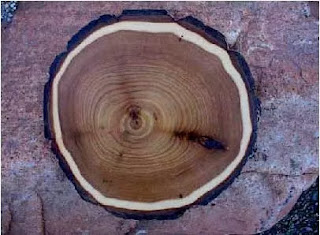Harvesting the Indigenous Garden
My Mini Three-Sisters Front-Yard Garden
Back in the spring, I encouraged readers to try growing some food this year, even if just in a planter on the balcony. I wanted to be sincere about this commitment, so I cast around for a good spot to start a new garden myself. I settled on an unlikely place: a bare spot in my front yard where the grass was thin and brown.
It was about 100 square feet and I had been eyeing it ever since my friend and mentor David Braden started the 100-Square-Foot Challenge back in the 2010s. (He passed on to the Big Garden in the Sky in 2024 and I miss him constantly.) In the first few years, I prepped by breaking sod and piling leaves, grass clippings and sometimes even brush on the pile, which was fortunately somewhat hidden from the road by a large dogwood bush. When I changed the cooling media in my evaporative cooler, I put the mineral-rich used media (essentially corrugated cardboard) on there too. The surrounding grass took notice and started infiltrating the now-rich soil.
When the spring of 2025 came, I knew it was time to plant something attractive and desirable. My choice was unusual for this neighborhood. A Native American lady was holding an Indigenous plant sale, where I picked up three little squash plants and some Hopi corn sprouts. I planted the corn in two rows along the north side of the garden so the tall plants wouldn't shade the squash too much. I also was given a tomato vine and a pepper plant that went in on the south perimeter where they would get more sun and water from the sprinkler system
It was a rather wet spring. When the weather stabilized in June, there was still a rainfall of at least a half-inch every week or so, so I didn't have to run the sprinklers much. My little garden took off! I especially loved how the squash plants spread their large leaves all over the garden and discouraged the encroaching grass, or at least covered it up. The squash plants flowered vigorously and the corn sprouted tassels and seemed to be growing several inches a day!
By early August I was harvesting beautiful ears of corn with deep purple kernels and greenish-white pattypan squash that resembled space ships. The squash didn't need to be peeled. It did well in a ratatouille and anywhere you'd use a zucchini. Next, I started harvesting tomatoes, about one per day. By late August, another type of squash was ready for harvest. I'm not sure what its name is, but it has a pink exterior and deep orange flesh. And it's as big as a full size watermelon.
What to do with such a gargantuan thing? A friend advised me to grate the flesh and freeze it raw in two-cup bags. Most recipes for zucchini bread call for two cups, she said. After cutting the squash in half lengthwise and scooping out the seeds, I peeled one end and grated about four cups with a box grater, using the largest holes. I used these gratings to make a wonderful cake for my daughter-in-law's birthday. There were a dozen people at the soiree, and the cake, baked in a bundt pan, fed them all easily. It was delightfully moist, with a nice crumb, as they say on the British Baking Show. (Recipe available on the New York Times Cooking page.)
But grating a large squash soon became tiring, so with the rest of the squash, I brushed the cut edges with olive oil and set it, cut sides down, on a large rimmed cookie sheet, baking it in a medium oven for about 50 minutes. The flesh was easily scooped into containers and the rind went into the compost. I used the cooked squash to thicken and enrich soups and sauces. I also added it to casseroles and even slathered it on tortillas to make a kind of vegetarian burrito! It's extremely versatile, which is fortunate since I now have three more squashes hanging out, ready to use throughout the winter. Let the experimentation in the kitchen begin!







Comments
Post a Comment